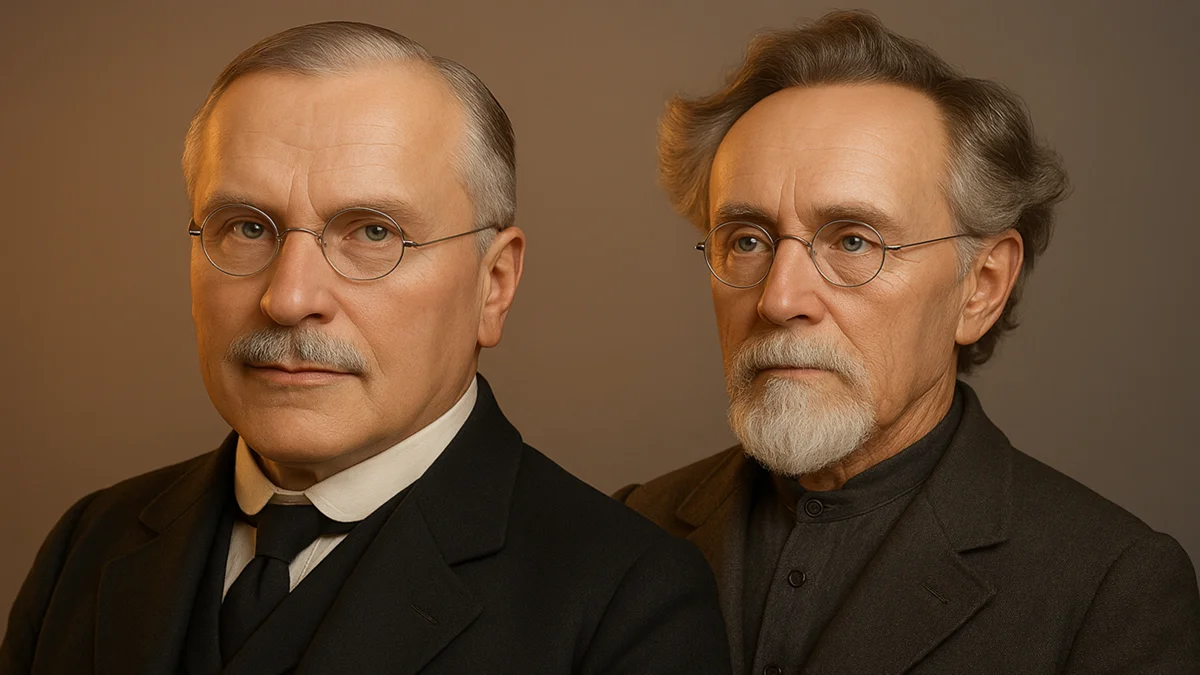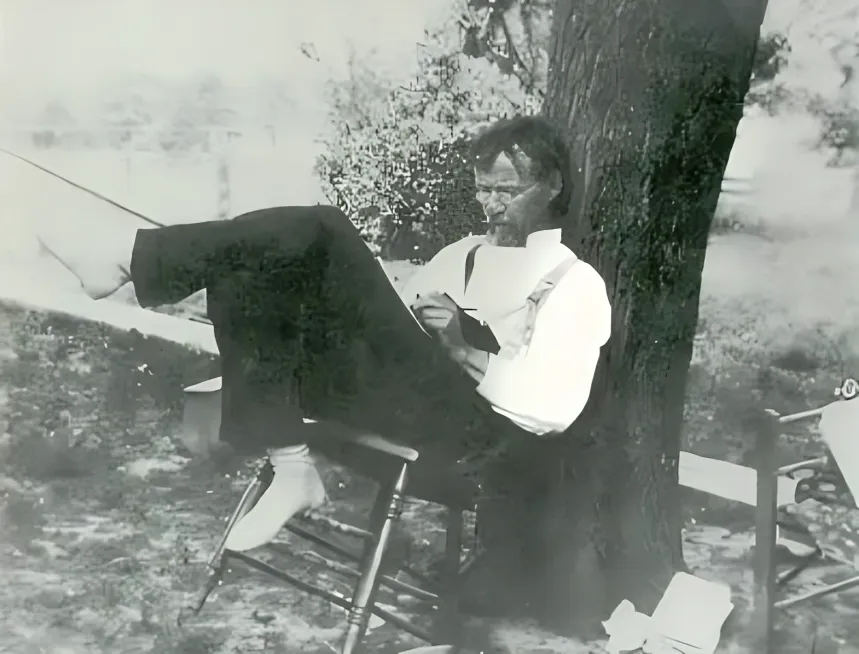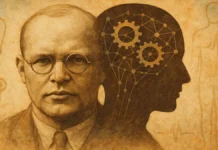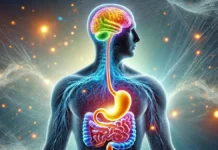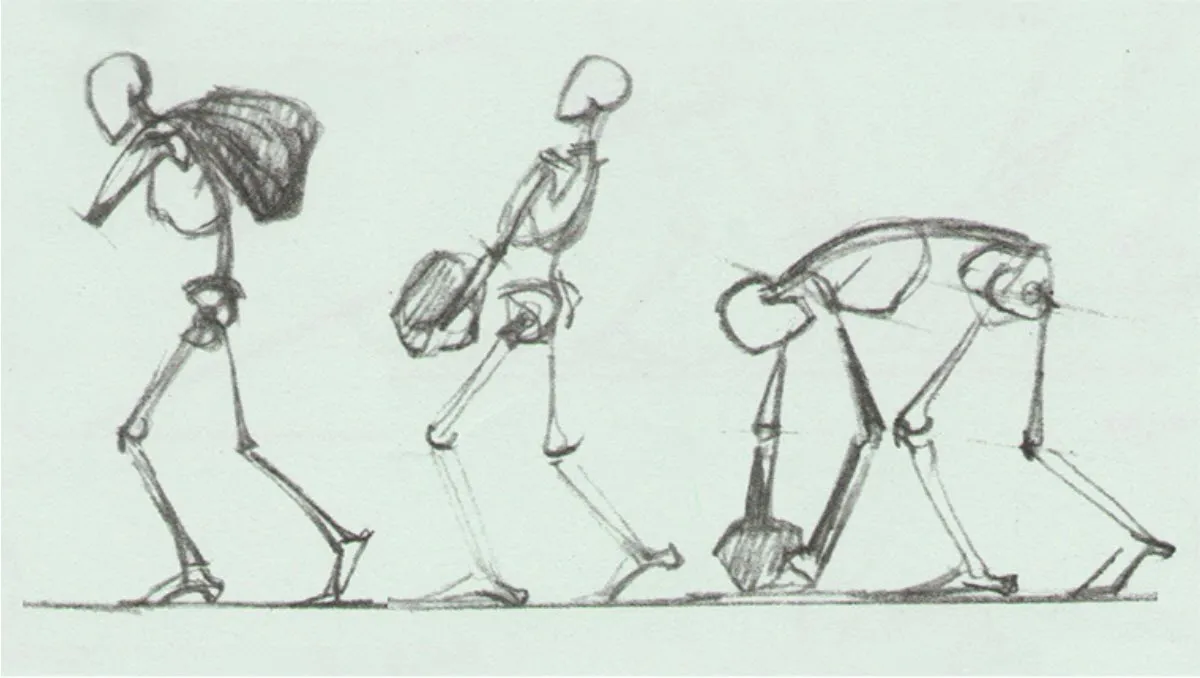Introduction
In the realm of holistic health and human well-being, the pioneering works of Carl Jung in analytical psychology and Andrew Taylor Still in osteopathic principles reveal intriguing commonalities. At the core of their shared visions lies a commitment to understanding individuals in a comprehensive and interconnected manner. Jung’s analytical psychology delved into the depths of the human psyche, emphasizing the integration of mind, body, and spirit. Similarly, Still’s osteopathic philosophy recognized the intrinsic connection between the musculoskeletal, nervous, and circulatory systems, advocating for a holistic approach to healthcare.
One fundamental theme uniting Jung and Still is their holistic perspective on human existence. Jung’s exploration of the collective unconscious and archetypes underscored the interconnected nature of psychological systems, transcending the traditional boundaries of conscious awareness. This resonates with Still’s holistic view in osteopathy, where the body is perceived as an integrated system, with dysfunction in one area potentially affecting the entire organism. Both thinkers acknowledged that true understanding necessitates an examination of the whole rather than isolated components.
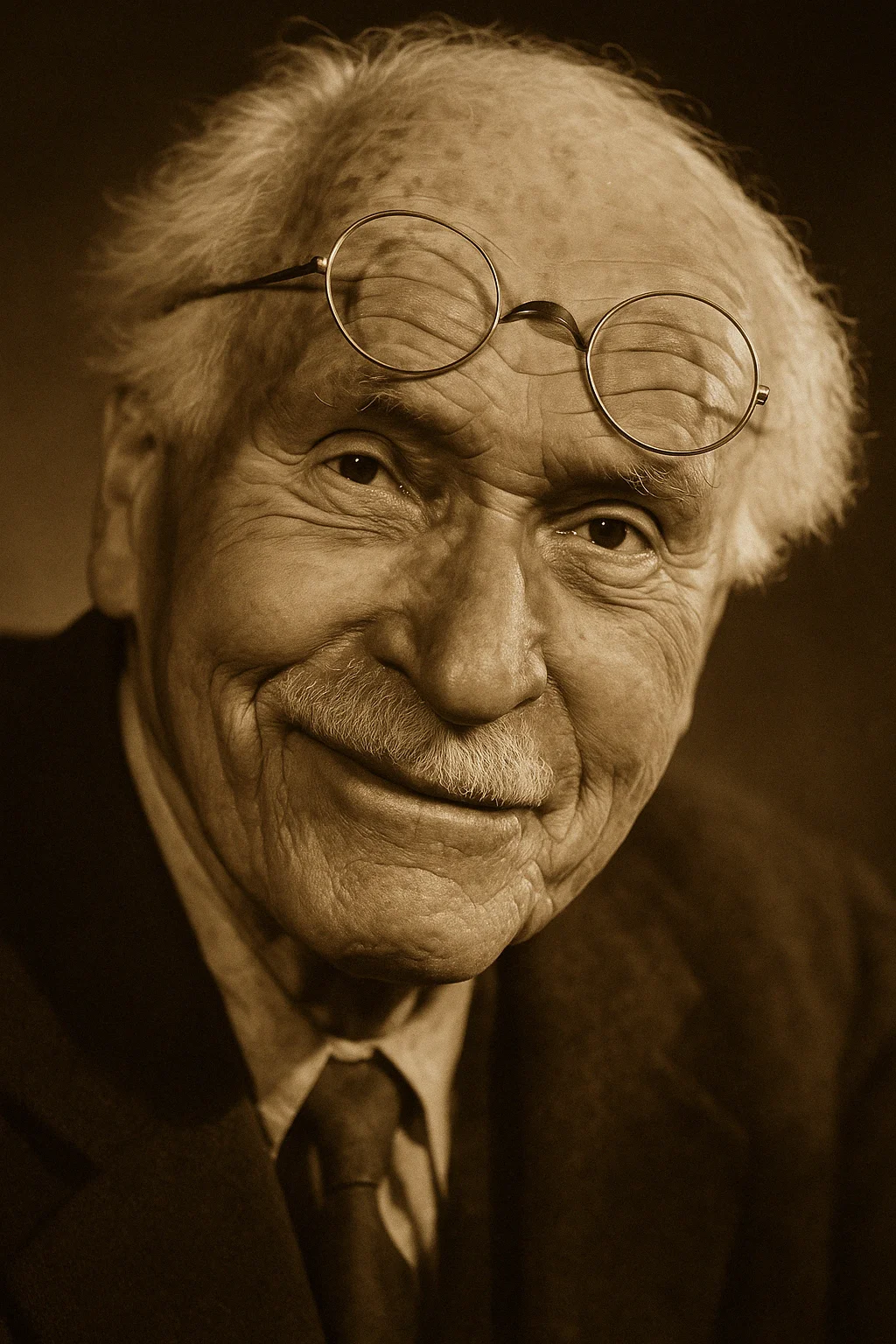
Carl Jung, the influential Swiss psychiatrist and psychoanalyst, whose work on analytical psychology and concepts such as the collective unconscious and archetypes continues to shape our understanding of the mind. His profound insights into human behavior and the psyche made him a pivotal figure in the field of psychology.
Furthermore, Jung and Still shared a profound emphasis on the mind-body connection. Jung’s work recognized the intricate relationship between mental states, symbols, and physical well-being. In parallel, Still’s osteopathic principles highlighted the body’s innate ability to self-regulate and heal, acknowledging the intricate interplay between physical health and mental equilibrium. Both pioneers recognized that addressing one aspect without considering the other would yield an incomplete understanding of an individual’s well-being.
A notable convergence between Jung and Still is their recognition of the transformative potential within individuals. Jung’s concept of individuation, the process of becoming one’s true self, aligns with Still’s principles that emphasize the body’s ability to adapt and change for optimal health. Both thinkers acknowledged that personal growth and transformation contribute significantly to overall well-being, whether in the psychological or physiological realms.
Moreover, the shared vision between Jung and Still extends to their acknowledgment of the environment’s impact on human health. Jung’s exploration of the collective unconscious incorporated cultural and societal influences, recognizing the profound effect of the external environment on individual well-being. Similarly, Still’s osteopathic philosophy considered environmental factors, lifestyle choices, and habits as crucial elements influencing an individual’s health, reinforcing the importance of a holistic approach.
Holistic Perspectives
Jung and Still, though working in different fields – psychology and osteopathy, respectively – shared a profound commitment to holistic perspectives that transcended the conventional boundaries of their disciplines.
Carl Jung, a renowned Swiss psychiatrist and psychoanalyst, delved deep into the realms of the human psyche. He advocated for the integration of the mind, body, and spirit in understanding mental health. For Jung, the human experience was not limited to the conscious mind but extended to the collective unconscious and the interconnectedness of archetypes that shaped our perceptions. This holistic approach aimed at a comprehensive understanding of the self, emphasizing the importance of balance and harmony in mental well-being.
Andrew Taylor Still, the founder of osteopathy, approached healthcare with a similar holistic mindset. Still’s philosophy revolved around the idea that the body is a unified system, where all parts are interconnected and interdependent. He emphasized the body’s self-healing mechanisms and the importance of addressing the root causes of health issues rather than merely treating symptoms. This resonates with the holistic paradigm, as Still considered the body, mind, and spirit as integral components of a harmonious whole.
Emphasis on Individuality
The emphasis on individuality is a striking commonality between Jung’s psychological insights and Still’s osteopathic principles. Both thinkers recognized the profound significance of acknowledging and honoring the uniqueness of each person, an aspect that resonates deeply with the personalized nature of osteopathic care.
Carl Jung’s concept of individuation encapsulates the journey toward becoming one’s authentic self. In the realm of psychology, individuation involves the process of integrating one’s conscious and unconscious elements, leading to a more complete and individualized existence. This perspective encourages personal growth, self-awareness, and the realization of one’s true potential. Jung’s focus on the individual journey aligns with the core principles of osteopathy, emphasizing a patient-centered approach that recognizes the distinctiveness of each individual.
Andrew Taylor Still’s osteopathic philosophy shares this commitment to individuality. In osteopathy, each person is seen as a unique entity with their own set of experiences, physical characteristics, and health needs. Osteopathic practitioners, following Still’s principles, tailor their treatments to address the specific requirements of each patient. This personalized approach extends beyond symptom management, seeking to identify and address the root causes of health issues while considering the individual’s overall well-being.
Exploration of the Unconscious
The exploration of the unconscious mind forms a fascinating parallel between Jung’s analytical psychology and Still’s osteopathic principles.
Carl Jung’s analytical psychology extensively explored the depths of the unconscious. Jung introduced concepts like symbols, archetypes, and the collective unconscious, revealing the profound influence of unconscious elements on human behavior and experiences. The collective unconscious, in particular, suggests a shared reservoir of archetypal symbols and experiences that shape the human psyche across cultures and time. This exploration aligns with the holistic approach, acknowledging that mental and emotional states often have roots in the unconscious mind.
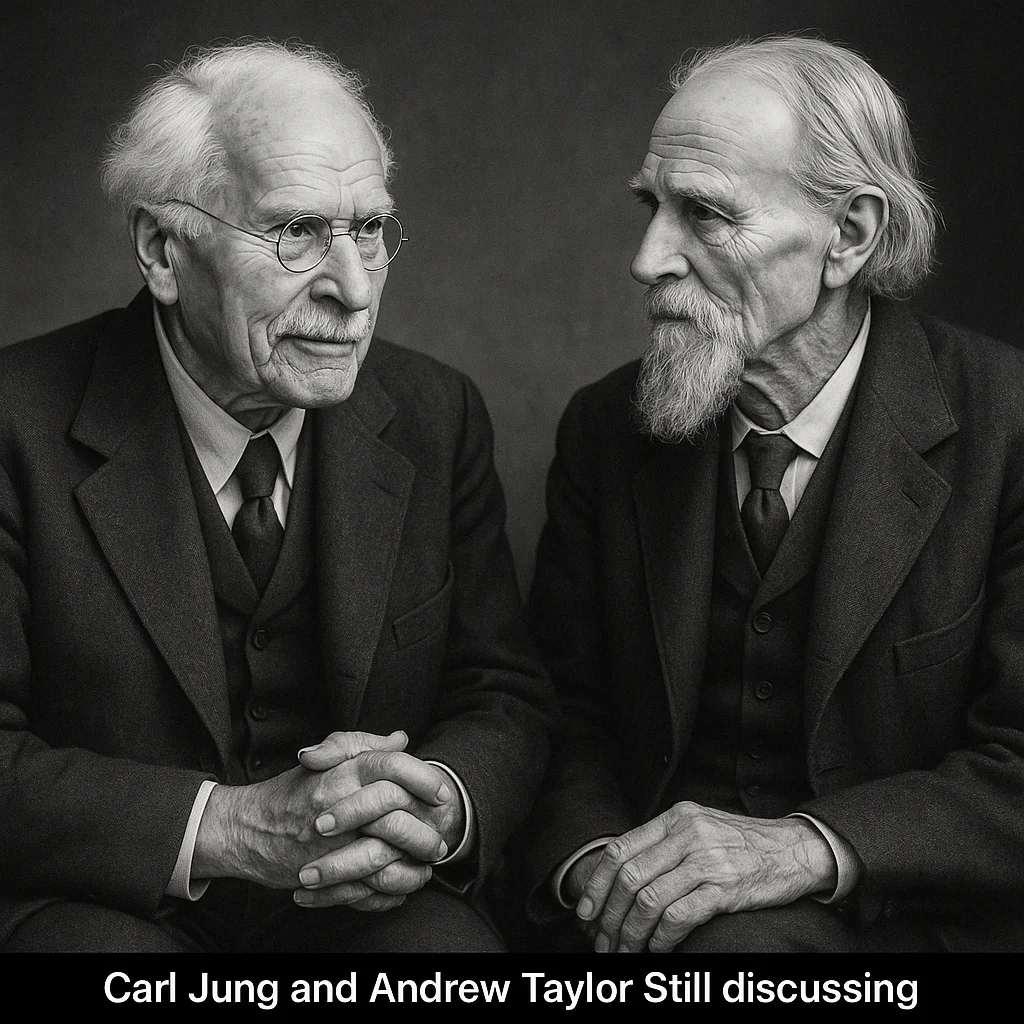
In the realm of osteopathy, Andrew Taylor Still recognized the body’s inherent healing mechanisms, some of which operate beneath conscious awareness. The body’s ability to self-regulate and heal is a fundamental principle of osteopathy. Still’s approach involves identifying and removing obstacles to the body’s natural healing processes, promoting a state of balance and well-being. This perspective implies that, just like in Jungian psychology, there are deep, unconscious processes at play within the body, contributing to its overall health and vitality.
Osteopathic treatments often aim to facilitate the body’s innate ability to heal itself, recognizing that many physiological functions operate beyond conscious control.
The intersection of Jung’s exploration of the unconscious and Still’s acknowledgment of the body’s self-healing mechanisms creates a holistic framework. This framework extends beyond the confines of traditional medical approaches, emphasizing the interconnectedness of mental, emotional, and physical well-being. You can use your platform to delve deeper into this integration, discussing how a comprehensive understanding of the unconscious can contribute to holistic healthcare practices.
By exploring the parallels between Jung’s psychological concepts and Still’s osteopathic principles, you contribute to a broader narrative that recognizes the intricate interplay between the conscious and unconscious aspects of human existence. This integration not only enriches the field of osteopathy but also opens avenues for a more holistic approach to health and well-being.
Innovation and Challenge to Tradition
Both figures were innovators in their respective fields and challenged traditional norms. Jung introduced groundbreaking ideas in psychology, such as the collective unconscious and archetypes, challenging the prevailing theories of his time. Still, with osteopathy, challenged conventional medical practices by emphasizing the body’s self-healing capacity and the importance of considering the whole person in diagnosis and treatment.
Integration of Mind-Body Connection
The integration of the mind-body connection serves as a fundamental aspect in both Jung’s and Still’s philosophies, underscoring the intricate interplay between mental and physical well-being. Although hailing from different professional backgrounds, the parallels in their approaches emphasize shared themes in understanding and promoting holistic health.
Carl Jung’s exploration of the psyche went beyond the confines of traditional psychology, acknowledging the profound impact of mental states on physical well-being. Jung recognized that emotional and psychological factors could significantly influence an individual’s overall health. His emphasis on the interconnectedness of the mind and body aligns with the holistic perspective that considers health as a multifaceted and integrated concept.
In the realm of osteopathy, Andrew Taylor Still, the founder of osteopathy, also placed a strong emphasis on the mind-body connection. Still’s philosophy recognized the interdependence of the musculoskeletal system, nervous system, and circulatory system. He believed that disruptions in one aspect of the body could have cascading effects on the overall health of an individual. This holistic approach not only addresses physical symptoms but also takes into account the mental and emotional aspects of well-being.
The convergence of Jung’s insights into the impact of mental states and Still’s emphasis on the interdependence of bodily systems creates a comprehensive framework for understanding health.
Spiritual Dimensions
The profound recognition of spiritual dimensions in the realms of psychology and healthcare serves as a common thread in the philosophies of Carl Jung and Andrew Taylor Still. Jung’s exploration of the spiritual aspects within the psyche went beyond conventional psychological frameworks. Concepts like the transcendent function, which highlights the transformative potential of integrating conscious and unconscious elements, and the quest for meaning in human existence reflected Jung’s deep engagement with the spiritual dimensions of the human psyche. He saw spirituality as an intrinsic part of the human experience, offering individuals a pathway to self-discovery, personal growth, and a deeper connection to the collective unconscious.
Similarly, Andrew Taylor Still’s osteopathic philosophy ventured into the spiritual realm by acknowledging the presence of a vital force within the body. Still’s recognition of this vital force aligned with spiritual principles that transcend the purely physiological aspects of health. In osteopathy, the vital force is considered an innate energy or life force that orchestrates the body’s self-regulating mechanisms and capacity for healing. This spiritual dimension within Still’s philosophy reflects a belief in the inherent wisdom of the body and its ability to strive toward balance and well-being.
Jung and Still’s incorporation of spiritual dimensions in their work demonstrates a shared understanding of the interconnectedness of mind, body, and spirit. While Jung delved into the psychological aspects of spirituality, emphasizing its role in individual transformation and meaning-making, Still’s osteopathic philosophy embraced the spiritual as an integral part of the body’s healing processes. Both thinkers recognized that addressing health and well-being necessitates an inclusive approach that encompasses the spiritual dimensions of human existence.
The convergence of spiritual dimensions in Jung and Still’s philosophies challenges traditional dichotomies between science and spirituality. Their holistic perspectives invite us to consider the intricate interplay between the physical, psychological, and spiritual aspects of human experience. By acknowledging the spiritual dimensions, Jung and Still paved the way for a more comprehensive understanding of health that transcends reductionist approaches, fostering a deeper appreciation for the profound interconnectedness of the human being in its entirety. In essence, their legacies inspire a holistic approach that recognizes the intricate dance between the material and the spiritual, enriching our understanding of the complexities inherent in the human journey towards well-being.
Interconnectedness of Systems
The profound understanding of the interconnectedness of various systems within the human body stands as a shared hallmark in the philosophies of Carl Jung and Andrew Taylor Still. Jung’s psychological framework delved into the intricate interplay of psychological systems, unveiling the complex dynamics between conscious and unconscious aspects of the mind. Central to his work was the recognition of archetypal patterns that transcended individual experiences, emphasizing the interconnected nature of the human psyche. Jung’s holistic approach illuminated how various psychological systems interacted, influencing an individual’s thoughts, emotions, and behaviors in a web of interconnectedness.
Parallel to Jung’s exploration of psychological interconnectedness, Andrew Taylor Still’s principles in osteopathy underscored the vital role played by interconnected physiological systems in maintaining overall health. Within the framework of osteopathy, Still recognized the intimate relationship between the musculoskeletal, nervous, and circulatory systems. Instead of isolating these systems, he viewed them as interdependent components of a dynamic whole. For Still, optimal health depended on the harmonious functioning of these interconnected systems, and disruptions in one area could reverberate through others. This holistic perspective guided Still’s approach to diagnosis and treatment, highlighting the importance of addressing the root causes of imbalances rather than merely treating isolated symptoms.
The convergence of Jung and Still’s philosophies on interconnectedness extends beyond disciplinary boundaries, reflecting a shared recognition of the holistic nature of human existence. Jung’s exploration of the intricate dance between psychological systems aligns with Still’s vision of the body as an integrated system, where the health of one aspect profoundly influences the well-being of the whole. Both thinkers, albeit in different fields, emphasized the significance of understanding and respecting the delicate balance and interdependence of systems within the human experience.
Jung and Still’s contributions serve as beacons for a more holistic understanding of health, transcending reductionist approaches that compartmentalize the complexities of the human body and mind. Their shared acknowledgment of interconnected systems challenges us to perceive individuals as dynamic entities shaped by the delicate interplay of physiological and psychological components. In essence, the recognition of interconnectedness in Jung and Still’s philosophies invites us to embrace a more comprehensive and integrated approach to understanding and promoting human well-being.
Empowerment of the Individual
The empowerment of the individual was a central theme in the works of both Carl Jung and Andrew Taylor Still, each contributing to this ethos in their distinct fields. Jung’s emphasis on individuation, a process of self-discovery and self-realization, served as a powerful tool for empowering individuals in the realm of psychology. By encouraging people to embark on a journey of understanding and integrating their own unique qualities and experiences, Jung promoted the idea that individuals have the agency to shape their own paths to psychological wholeness. This focus on individuation not only acknowledged the autonomy of the individual but also underscored the transformative potential of self-awareness and personal development.
Similarly, in the field of osteopathy, Andrew Taylor Still’s principles aligned with the empowerment of individuals. Still’s approach recognized the body’s inherent self-regulating mechanisms and its capacity for healing. By acknowledging the body’s ability to maintain balance and health, Still empowered individuals to actively participate in their healing processes. This empowerment extended beyond the treatment room, emphasizing the significance of lifestyle choices, awareness, and proactive engagement in maintaining overall well-being. In essence, Still’s principles in osteopathy positioned individuals not as passive recipients of medical interventions but as active contributors to their own health outcomes.
Jung and Still shared a common belief in the agency of individuals, highlighting the importance of self-awareness, personal responsibility, and active engagement in one’s journey towards well-being. Jung’s psychological framework empowered individuals to explore their unique potentials, fostering a sense of autonomy and purpose. In a parallel vein, Still’s osteopathic principles empowered individuals to become stewards of their own health, recognizing the body’s natural capacity for healing and the impact of lifestyle choices.
The empowerment of the individual in Jung and Still’s philosophies transcends disciplinary boundaries, reflecting a broader paradigm shift towards recognizing the importance of holistic approaches to well-being. Whether in the realm of the mind or the body, the acknowledgment of individual agency, self-awareness, and active participation in the process of healing remains a powerful and enduring aspect of their legacies. Jung and Still’s contributions collectively reinforce the transformative potential that lies within each individual, fostering a holistic understanding of empowerment that extends across the spectrum of human experience.
Recognition of Symbolism
Symbolism holds a significant place in the contributions of both Carl Jung and Andrew Taylor Still. Jung’s exploration of symbols and archetypes in psychology involved recognizing these as universal representations embedded in the human psyche. He believed that symbols carried profound meanings, connecting individuals to a collective unconscious shared across cultures and history. This approach allowed Jung to uncover deeper layers of the human experience, transcending cultural boundaries and revealing fundamental aspects of the human mind.
In a parallel manner, Andrew Taylor Still integrated symbolism into the realm of osteopathy. Still, acknowledging the body’s intrinsic ability to communicate, recognized symptoms and bodily expressions as symbolic manifestations. Instead of viewing symptoms as mere indicators of a specific ailment, Still interpreted them as meaningful symbols pointing towards underlying imbalances within the body. This symbolic perspective allowed him to approach healthcare with a broader understanding, addressing not only the immediate symptoms but also the root causes of distress. By recognizing the symbolism inherent in the body’s expressions, Still emphasized the importance of deciphering these signals for a comprehensive approach to healing and overall well-being.
The shared recognition of symbolism in Jung’s exploration of the psyche and Still’s approach to osteopathy underscores a common thread in their philosophies. Both figures acknowledged that symbols carry profound and universal meanings, whether in the realm of the mind or the physical body. This shared perspective reflects a holistic understanding of the interconnectedness between the mental and physical aspects of human experience. Jung and Still’s recognition of symbolism not only enriched their respective fields but also highlighted the inherent significance of interpreting symbolic expressions for a more profound comprehension of the complexities of human existence and health.
Integration of Eastern and Western Influences
The integration of Eastern and Western influences is evident in the works of both Carl Jung and Andrew Taylor Still. Jung, a prominent figure in psychology, delved into Eastern philosophies and symbols, contributing to his conceptualization of the collective unconscious. His exploration of Eastern thought, particularly from traditions such as Hinduism and Buddhism, enriched his understanding of archetypes and the interconnectedness of the human psyche. This cross-cultural synthesis allowed Jung to develop a more holistic perspective on the human mind, transcending the boundaries of Western psychological traditions.
In a parallel vein, Andrew Taylor Still, the founder of osteopathy, similarly embraced a synthesis of Eastern and Western elements in the development of his medical philosophy. Still’s approach to osteopathy was not confined to Western medical traditions; instead, he drew inspiration from diverse sources, blending insights from both Eastern and Western approaches to healthcare. In crafting osteopathy, Still incorporated principles that resonated with Eastern philosophies, emphasizing the body’s self-healing capacity and the interconnectedness of various bodily systems. This integration of diverse medical traditions into osteopathic principles marked a departure from conventional Western medical practices, reflecting Still’s holistic and inclusive perspective on health and well-being.
Jung and Still’s journeys into the integration of Eastern and Western influences highlight the transcendent nature of their contributions to their respective fields. Jung’s exploration of Eastern symbolism broadened the horizons of psychology, fostering a more inclusive understanding of the human psyche. On the other hand, Still’s incorporation of Eastern principles into osteopathy laid the groundwork for a holistic approach to healthcare that considered the body as a dynamic and interconnected system. Both figures serve as exemplars of how the synthesis of diverse cultural and philosophical influences can lead to groundbreaking advancements in understanding and promoting human health – a testament to the richness that emerges when Eastern and Western perspectives harmoniously converge in the pursuit of knowledge and healing.
Emphasis on Personal Transformation
At the heart of both Carl Jung’s analytical psychology and Andrew Taylor Still’s osteopathic principles lies a profound emphasis on personal transformation. Jung’s visionary concept of individuation formed the cornerstone of his psychological framework, encapsulating the idea of an individual’s journey toward self-realization and wholeness. This transformative process involves a continuous exploration of one’s inner self, a maturation of the personality, and the integration of disparate elements within the psyche. Jung posited that this individuation process is essential for reaching a state of balance and authenticity.
In parallel, Andrew Taylor Still, the trailblazer of osteopathy, embraced a similar emphasis on personal transformation through the body’s innate healing capacities. Still’s principles underscored the dynamic nature of the body, portraying it as an entity capable of adaptation and change. The osteopathic philosophy acknowledged that optimal well-being is not a static state but a continuous process of transformation and adaptation. The body, according to Still, possesses an inherent wisdom that enables it to navigate through challenges, heal injuries, and maintain equilibrium.
Jung’s individuation process aligns with Still’s notion of the body’s ability to adapt and change, suggesting a harmonious integration of psychological and physiological transformation. In Jungian psychology, individuation involves confronting and assimilating the various aspects of the unconscious, leading to a more integrated and balanced personality. Similarly, in osteopathy, Still’s emphasis on transformative healing acknowledges that the body’s responses to injuries, stressors, and illnesses involve dynamic processes that contribute to overall well-being.
The parallel between Jung and Still in emphasizing personal transformation extends beyond theoretical frameworks into practical applications. Jung’s therapeutic methods aimed at facilitating the individuation process involved exploring the unconscious, integrating suppressed aspects, and fostering a conscious awareness of one’s inner dynamics. In a complementary manner, Still’s osteopathic treatments aimed at facilitating the body’s transformative healing processes through manual techniques, encouraging the restoration of balance and functionality.
Both visionaries recognized that personal transformation contributes not only to individual well-being but also to the collective human experience. Jung believed that as individuals undergo the process of individuation, they become more attuned to their unique purpose and, in turn, contribute positively to society. Similarly, Still’s osteopathic principles, by focusing on transformative healing, aimed at restoring individuals to a state of balance, enabling them to actively participate in their communities and contribute to the greater good.
Recognition of the Role of Environment
The profound recognition of the role of the environment in shaping individual well-being emerges as a shared theme in the philosophies of Carl Jung and Andrew Taylor Still. Jung’s exploration of the collective unconscious delved into the influence of cultural and societal factors on the human psyche. He emphasized that the unconscious mind is not only personal but also shaped by collective experiences, myths, and symbols within a cultural context. This acknowledgment of the impact of the external environment on the internal world highlighted Jung’s holistic approach, recognizing that the psyche is intricately interwoven with the cultural and societal milieu.
Similarly, in the field of osteopathy, Andrew Taylor Still emphasized the critical role of environmental factors in influencing an individual’s health. Still’s holistic philosophy considered the environment, encompassing lifestyle, habits, and external conditions, as integral components shaping one’s well-being. He recognized that health is not solely determined by internal physiological factors but is profoundly influenced by external elements. This perspective aligned with Still’s overarching belief in the interconnectedness of mind, body, and environment, advocating for a comprehensive understanding of health that extends beyond the individual to encompass the broader context in which they live.
Jung and Still’s recognition of the environment’s impact on well-being transcends disciplinary boundaries, reflecting a shared understanding of the intricate interplay between internal and external factors. Jung’s exploration of the collective unconscious underscored the cultural and societal influences that shape an individual’s psyche, while Still’s osteopathic principles incorporated environmental considerations into the holistic framework of health.
Both thinkers invite us to move beyond reductionist perspectives that isolate individual health from its broader context. Their philosophies underscore the need for a more inclusive approach to well-being, acknowledging that an individual’s health is not solely determined by internal factors but is deeply intertwined with the environment in which they live, work, and interact. In essence, Jung and Still’s legacies inspire a holistic paradigm that recognizes the dynamic interconnections between the individual and their environment, encouraging a more comprehensive understanding of health that embraces the complex tapestry of human existence.
Influence on Subsequent Disciplines
The enduring impact of Carl Jung and Andrew Taylor Still extends far beyond their respective fields, shaping subsequent disciplines and leaving an indelible mark on the realms of psychology, healthcare, and beyond. Jung’s revolutionary concepts, such as archetypes and the collective unconscious, have transcended the confines of psychology, influencing a myriad of disciplines including literature, art, and cultural studies. The archetypal patterns he unveiled provided a rich framework for understanding universal symbols and themes that resonate across diverse cultural landscapes. In literature, authors draw on Jungian archetypes to create characters and narratives that tap into shared human experiences. Similarly, the influence of Jung’s ideas can be seen in the interpretation of artworks and cultural phenomena, enriching the understanding of symbolism and the collective aspects of the human psyche.
Andrew Taylor Still’s founding principles of osteopathy have also reverberated across disciplines, contributing significantly to the evolution of manual medicine and complementary healthcare practices. Still’s emphasis on the body’s self-healing capacity and the interconnectedness of its systems laid the groundwork for the development of chiropractic care and physical therapy. Chiropractors, inspired by Still’s holistic approach, adopted similar principles in addressing musculoskeletal issues, focusing on the body’s innate ability to heal. Physical therapy, too, integrated elements of Still’s philosophy into its practices, recognizing the importance of a comprehensive understanding of health that encompasses both the physical and holistic dimensions.
Jung and Still’s influence transcends the boundaries of their original disciplines, illustrating the far-reaching impact of their innovative ideas. Jungian psychology, with its emphasis on the collective unconscious and archetypal symbolism, has become an integral part of literary and cultural studies, enriching the interpretation of narratives and artistic expressions. Still’s osteopathic principles, with their holistic approach to healthcare, have not only shaped the field of manual medicine but have also permeated into complementary healthcare practices, fostering a more integrated understanding of the body’s potential for healing.
The legacies of Jung and Still underscore the transformative power of interdisciplinary influence, emphasizing that groundbreaking ideas can transcend their initial contexts, permeating various fields and contributing to a richer, more interconnected tapestry of human knowledge and understanding. The enduring impact of these thinkers continues to inspire exploration and innovation across diverse disciplines, shaping the way we perceive and engage with the complexities of the human experience.
Patient-Centered Approaches
The advocacy for patient-centered approaches to care stands as a common thread in the philosophies of Carl Jung and Andrew Taylor Still, emphasizing the importance of recognizing the individual’s unique experiences and holistic well-being. Jung, in his therapeutic methods, pioneered a patient-centered approach that delved into the subjective reality of each individual. He understood that healing and growth are deeply personal journeys, shaped by an individual’s unique experiences, emotions, and perceptions. By prioritizing the patient’s inner world, Jung aimed to create a therapeutic space that acknowledged and respected the intricacies of their subjective reality, fostering a deep understanding and collaboration between therapist and patient.
Similarly, Andrew Taylor Still’s osteopathic principles embraced a patient-centered approach that prioritized understanding the individual as a whole. Still recognized that health is not solely determined by isolated symptoms but is profoundly influenced by an individual’s history, lifestyle, and personal context. In osteopathy, the patient is viewed as an integrated system, and the diagnostic and treatment processes take into account the interconnectedness of various bodily systems. By considering the patient’s unique circumstances, Still’s approach aimed to address not only the immediate symptoms but also the underlying causes, fostering a comprehensive understanding of the individual’s health.
Jung and Still’s patient-centered approaches share a common foundation in valuing the individual’s perspective and recognizing the importance of tailoring care to meet their unique needs. Jung’s emphasis on subjective reality and the deeply personal nature of psychological healing resonates with Still’s holistic approach in osteopathy, where the patient’s history, lifestyle, and context are integral to the diagnostic and therapeutic processes.
Both thinkers challenge traditional, one-size-fits-all approaches to care, advocating for a more personalized and nuanced understanding of the individual. By acknowledging the subjective reality of patients and considering their unique circumstances, Jung and Still’s patient-centered approaches have had a lasting impact on the fields of psychology and healthcare, influencing the development of more inclusive and empathetic models of care. The enduring legacies of these figures serve as a reminder of the transformative power of recognizing and honoring the individual’s experiences in the pursuit of health and well-being.
Promotion of Preventive Healthcare
The promotion of preventive healthcare emerged as a shared value in the philosophies of Carl Jung and Andrew Taylor Still, reflecting a commitment to fostering well-being through proactive measures. Jung’s emphasis on self-awareness and psychological well-being served as a foundational element of preventive healthcare in the realm of psychology. He believed that cultivating self-awareness, understanding unconscious patterns, and addressing psychological imbalances early on were essential for preventing the development of more severe mental health conditions. By encouraging individuals to engage in self-reflection and psychological growth, Jung promoted a proactive approach to mental health that aimed to prevent the onset of distress and disorders.
Similarly, Andrew Taylor Still’s osteopathic principles embraced a preventive approach to healthcare, emphasizing the importance of addressing imbalances in the body before they progressed into more severe conditions. Still recognized the interconnectedness of bodily systems and believed that early intervention and holistic care could prevent the manifestation of diseases. The osteopathic philosophy focused on maintaining optimal health by addressing imbalances, enhancing the body’s self-regulating mechanisms, and promoting overall resilience. Through techniques such as manipulation and lifestyle recommendations, Still’s approach aimed to prevent the progression of health issues and contribute to long-term well-being.
Jung and Still’s parallel emphasis on preventive healthcare underscored a holistic understanding of health that extended beyond merely treating symptoms. Both thinkers recognized the significance of addressing the root causes of imbalances and promoting well-being through proactive measures. While Jung’s focus was on psychological self-awareness and growth, Still’s preventive approach in osteopathy extended to the physical realm, emphasizing the importance of maintaining balance within the body to prevent the onset of diseases.
The alignment of Jung and Still’s philosophies on preventive healthcare highlights a shared commitment to empowering individuals to take an active role in preserving their health. By promoting self-awareness, addressing imbalances early on, and considering the interconnectedness of mental and physical well-being, Jung and Still contributed to a holistic paradigm that prioritizes prevention as a cornerstone of a resilient and flourishing life. The enduring legacies of these thinkers inspire a proactive and integrated approach to healthcare that resonates across disciplines and continues to shape contemporary perspectives on well-being.
Conclusion
In conclusion, the legacies of Carl Jung and Andrew Taylor Still have left an indelible mark on the realms of psychology and healthcare, respectively, reflecting shared principles and values that resonate across disciplines. Both thinkers, in their pioneering efforts, advocated for holistic and patient-centered approaches that acknowledge the interconnectedness of mind, body, and spirit. Jung’s exploration of the collective unconscious and archetypal symbolism transcended the boundaries of psychology, influencing literature, art, and cultural studies, fostering a deeper understanding of universal human experiences. Simultaneously, Still’s osteopathic principles laid the groundwork for manual medicine and complementary healthcare practices, emphasizing the body’s self-healing capacity and the importance of preventive healthcare.
A central theme in their philosophies was the empowerment of the individual. Jung’s concept of individuation encouraged personal development and self-realization, recognizing the transformative potential within each person’s unique experiences. Similarly, Still’s osteopathic philosophy empowered individuals to actively participate in their healing process, considering their history, lifestyle, and context. Both thinkers challenged traditional approaches by acknowledging the agency of individuals in their journeys towards well-being.
Moreover, the recognition of spiritual dimensions in their work added a profound depth to their philosophies. Jung delved into the spiritual aspects of the psyche, unveiling the transcendent function and the quest for meaning, enriching not only psychology but also literature and art. Still, on the other hand, integrated spiritual principles within osteopathy, acknowledging a vital force within the body that aligns with innate capacities for healing.
Additionally, the holistic understanding of health and the consideration of environmental factors were paramount in their philosophies. Jung’s collective unconscious highlighted the influence of cultural and societal factors on the psyche, while Still’s osteopathic approach viewed the patient as an integrated system, considering lifestyle, habits, and external conditions. Both recognized that an individual’s well-being is intricately connected to their environment, challenging reductionist perspectives.
Furthermore, the emphasis on preventive healthcare marked a common ground between Jung and Still. Jung’s focus on self-awareness and psychological well-being complemented Still’s preventive approach in osteopathy, aiming to address imbalances before they progressed into severe conditions.
In essence, the enduring impact of Jung and Still’s ideas extends beyond their initial contexts, shaping subsequent disciplines and contributing to a more integrated and holistic understanding of human existence. Their philosophies continue to inspire a paradigm that values the individual’s uniqueness, acknowledges the interconnectedness of various aspects of health, and promotes a proactive and preventive approach to well-being. The convergence of their principles emphasizes the transformative power of recognizing and honoring the intricate tapestry of the human experience.

